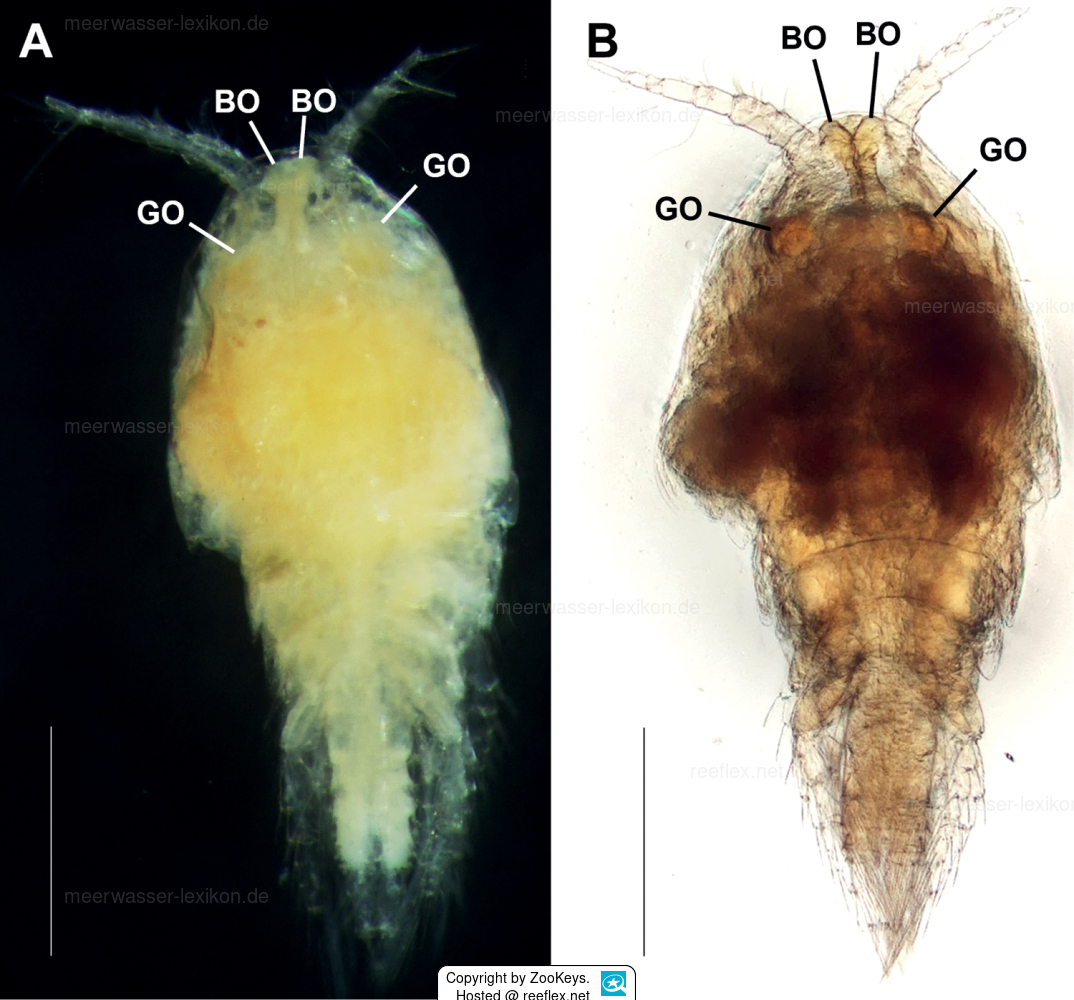Info
With 24,000 known species, the copepod subclass is the most species-rich group of crustaceans (Crustacea) and also makes up the largest part of the marine plankton.
However, they have conquered all habitats on our planet and can even be found in groundwater. A few species are predatory, some are parasitic.
Gyorome guttatum is a member of the Tisbidae family and has been found at various depths in the Kuroshio, the Japan Current), a surface ocean current in the western Pacific.
It is astonishing that these small sea creatures can tolerate the large differences in pressure and temperature.
The basis of life is phytoplankton, on which the zooplankton, to which Gyorome guttatum belongs, feeds.
The zooplankton in turn feeds all larger marine organisms in the food chain, over several stages.
Etymology. The genus name is based on the Japanese word "Gyorome", meaning "bulging eyes" and refers to the large ocelli in the cephalosome of the type species.
Citation:
Komeda S, Ohtsuka S, Huys R (2024)
A new genus and species of oceanic planktonic Tisbidae (Crustacea, Copepoda, Harpacticoida) with enlarged modified eyes.
ZooKeys 1191: 307–338. https://doi.org/10.3897/zookeys.1191.114974
Copyright: © Sota Komeda et al.
This is an open access article distributed under terms of the Creative Commons Attribution License (Attribution 4.0 International –CC BY 4.0)
However, they have conquered all habitats on our planet and can even be found in groundwater. A few species are predatory, some are parasitic.
Gyorome guttatum is a member of the Tisbidae family and has been found at various depths in the Kuroshio, the Japan Current), a surface ocean current in the western Pacific.
It is astonishing that these small sea creatures can tolerate the large differences in pressure and temperature.
The basis of life is phytoplankton, on which the zooplankton, to which Gyorome guttatum belongs, feeds.
The zooplankton in turn feeds all larger marine organisms in the food chain, over several stages.
Etymology. The genus name is based on the Japanese word "Gyorome", meaning "bulging eyes" and refers to the large ocelli in the cephalosome of the type species.
Citation:
Komeda S, Ohtsuka S, Huys R (2024)
A new genus and species of oceanic planktonic Tisbidae (Crustacea, Copepoda, Harpacticoida) with enlarged modified eyes.
ZooKeys 1191: 307–338. https://doi.org/10.3897/zookeys.1191.114974
Copyright: © Sota Komeda et al.
This is an open access article distributed under terms of the Creative Commons Attribution License (Attribution 4.0 International –CC BY 4.0)







 ZooKeys
ZooKeys

